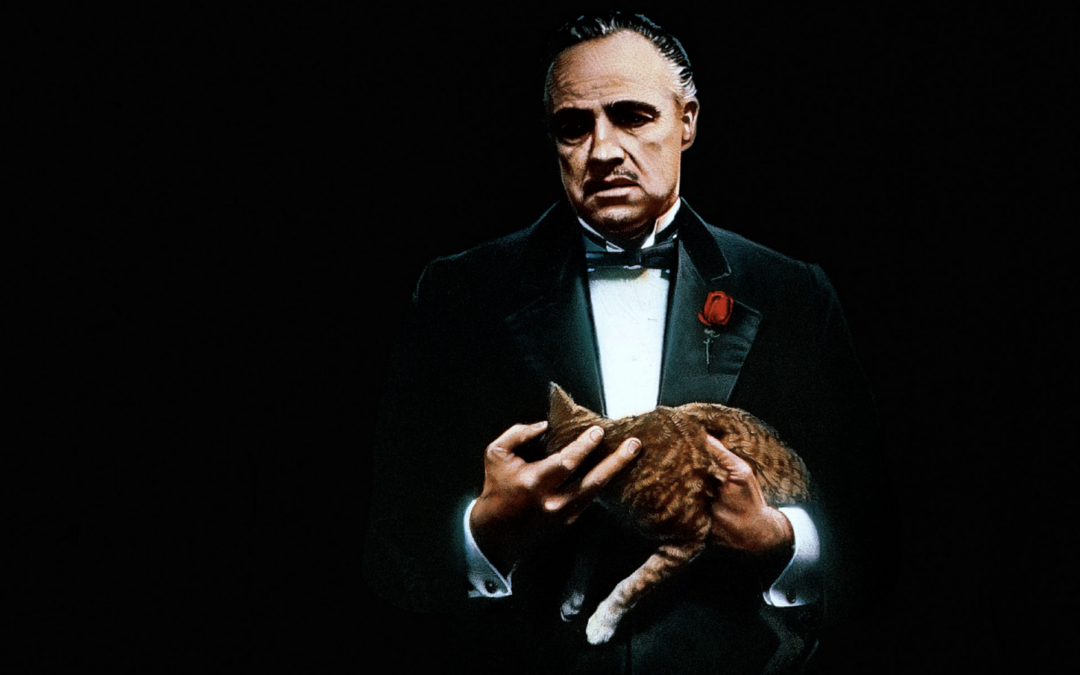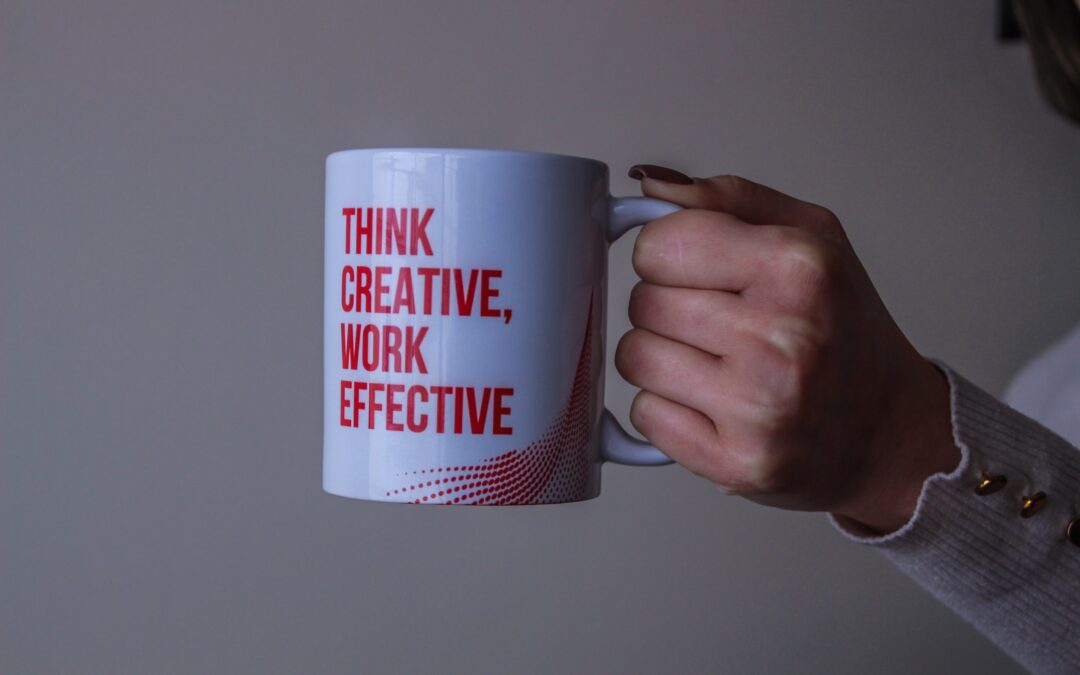
by Robyn Bolton | Apr 2, 2023 | Innovation, Tips, Tricks, & Tools
The Official Story
“Innovation” is not peanut butter.
You can’t smear it all over everything and expect deliciousness.
When discussing innovation, you must be specific so people know what you expect. This is why so many thought leaders, consultants, and practitioners preach the importance of defining different types of innovation.
- Clayton Christensen encourages focusing on WHY innovation is happening – improve performance, improve efficiency, or create markets – in his 2014 HBR article.
- The classic Core/Adjacent/Transformational model focuses on WHAT is changing – target customer, offering, financial model, and resources and processes.
- McKinsey’s 3 Horizons focus on WHEN the results are achieved – this year, 2-3 years, 3-6 years.
It’s easy to get overwhelmed by the options and worry about which approach is “best.” But, like all frameworks, they’re all a little bit right and a little bit wrong, and the best one is the one that will be used and get results in your organization.
The REAL story
Everything in the official story is true, but not the whole truth.
“Innovation” is not peanut butter.
You can’t smear it all over everything and expect deliciousness.
When doing innovation, you must remember your customer – the executives who make decisions, allocate resources, and can accelerate or decimate your efforts.
More importantly, you need to remember their Jobs to be Done (JTBD) – keep my job, feel safe and respected, and be perceived as competent/a rising star – because these jobs define the innovations that will get to market.
3 REAL types of innovation
SAFE – The delightful solution to decision-makers’ JTBD
Most closely aligned with Core innovation, improving performance or efficiency, and Horizon 1 because the focus is on improving what exists in a way that will generate revenue this year or next. Decision-makers feel confident because they’ve “been there and done that” (heck, doing “that” is probably what got them promoted in the first place). In fact, they’re more likely to get in trouble for NOT investing in these types of innovations than they are for investing in them.
STRETCH – The Good Enough solution
Most like Adjacent innovation because they allow decision-makers to keep one foot in the known while “stretching” their other foot into a new (to them) area. This type of innovation makes decision-makers nervous because they don’t have all the answers, but they feel like they at least know what questions to ask. Progress will require more data, and decisions will take longer than most intrapreneurs want. But eventually, enough time and resources (and ego/reputation) will be invested that, unless the team recommends killing it, the project will launch.
SPLATTER – The Terrible solution
No matter what you call them – transformational, radical, breakthrough, disruptive, or moonshots – these innovations make everyone’s eyes light up before reality kicks in and crushes our dreams. These innovations “define the next chapter of our business” and “disrupt ourselves before we’re disrupted.” These innovations also require decision-makers to let go of everything they know and wander entirely into the unknown. To invest resources in the hope of seeing the return (and reward) come back to their successor (or successor’s successor). To defend their decisions, their team, and themselves when things don’t go exactly as planned.
How to find the REAL type that will get real results.
- “You said you want X. Would you describe that for me?” (you may need to give examples). When I worked at Clayton Christensen’s firm, executives would always call and ask for our help to create a disruptive innovation. When I would explain what they were actually asking for (something with “good enough” performance and a low selling price that appeals to non-consumers), they would back away from the table, wave their hands, and say, “Oh, not that. We don’t want that.”
- “How much are you willing to risk?” If they’re willing to go to their boss to ask for resources, they’re willing to Stretch. If they’re willing to get fired, they’re willing to Splatter. If everything needs to stay within their signing authority, it’s all about staying Safe.
- “What would you need to see to risk more?” As an innovator, you’ll always want more freedom to push boundaries and feel confident that you can convince others to see things your way. But before you pitch Stretch to a boss that wants Safe, or Splatter to a boss barely willing to Stretch, learn what they need to change their minds. Maybe it will be worth your effort, maybe it won’t. Better to know sooner rather than later.

by Robyn Bolton | Jan 10, 2023 | Innovation, Tips, Tricks, & Tools
What happened the last time you asked your team for ideas?
A. Nothing. Nada. Zip. Zilch.
B. Got some ideas but nothing new or noteworthy
C. Got lots of ideas, but very few were relevant, new, or big
D. The clouds parted. The angels sang. The Ideas forever transformed our business.
My guess is you answered A, B, or C
(If you answered D, let me know because I need to learn how you did it).
While there are dozens of reasons why D did not happen, the most common one is this:
You asked for ideas.
You said, “Hey, I want to hear your ideas.”
Or maybe you got more specific and said, “I want to hear your ideas about how we can do better.”
What your team heard was “Hey, I want to hear your ideas as long as they’re the ideas I want to hear and pertain to the topics I want to hear about, but I’m not going to tell you the topics, so share at your own risk and may the odds be ever in your favor.”
So your team stayed quiet.
Good news, you can turn the odds in your favor if you do this ONE thing:
Give them constraints.
It seems counterintuitive.
After all, shouldn’t creativity be unconstrained?
Isn’t ideation all about blue sky crazy thinking?
Doesn’t innovation require us to unshackle ourselves from what is practical and dream of what’s possible?
No. No. No.
Constraints fuel creativity
You don’t have infinite money, people, or time. *
Which means you have constraints.
Don’t run from that fact. Don’t hide from it. Don’t ignore it,
Embrace it because it is what fuels creation, innovation, and growth.
No one knew that better than Orson Welles (and he was a pretty creative guy)
“The enemy of art is the absence of limitations, ” he told filmmaker Henry Jaglom. “Economically and creatively, that’s the most important advice you can be given. You have limitations; you don’t have $ 1 million to blow up that bridge, so you have to create something else on film to produce the same effect. Instead of having money to hire hundreds of extras, you have to sneak a cameraman in a wheelchair through the streets of New York City and steal the shot, which gives you a look of much greater reality.”
If constraints can create Citizen Kane, imagine what they can do for your business.
Constraints demand focus
Think about the last movie you saw that was way too long. Or the book that could have been an article. Or the meeting that should have been an email.
When you have all the money, time, or resources you need, you can do anything and try to do everything. Unfortunately, the result is usually a bloated confusing mess that leaves your customers feeling like they’ve lost more than they gained.
But when you only have 2 hours or 300 pages to tell a story, 20 minutes instead of four hours for a presentation, or $10,000 to create a new product, you get crystal clear on what you’re trying to accomplish, prioritize what you need, and leave everything else behind.
Constraints cause tension which leads to choices
In The Offer, a fantastic series about the making of The Godfather, there’s a great scene in which the studio executive demands that Francis Ford Coppola cut 45 minutes from the film (and helpfully suggests cutting all the scenes set in Sicily). The reason? So that theaters can host five showings per day instead of four.
Two hours is a constraint.
Sicily is where Michael abandons all hope of a normal life.
The tension between revenue and story, business and art, is real.
Tension requires you to make choices. Constraints shouldn’t always win. But they should always be present.
Constraints create value
The next time you ask for ideas sprinkle in some constraints.
- “I’d like your ideas for how we can use existing assets to expand into new markets.”
- “How can we earn more money from existing customers without raising prices?”
- “What can we stop doing so we can focus on high-priority work and avoid burnout?”
You’ll find that adding a few constraints to your request for ideas will be an offer your team can’t refuse.
*If you do have unlimited people, money, and time, please let me know. I’d love to talk to you.

by Robyn Bolton | Dec 14, 2022 | Innovation, Tips, Tricks, & Tools
Congratulations! You developed and are using a best-in-class Innovation Process.
You start by talking to consumers, studying mega-trends, and scanning the globe for emerging technologies and disruptive offerings.
Once you find a problem and fall in love with it, you start dreaming and designing possible solutions. You imagine what could be, focused on creating as many ideas as possible. Then you shift to quality, prioritizing ideas that fit the company’s strategy and are potentially desirable, viable, and feasible.
With prioritized ideas in hand, you start iterating, an ongoing cycle of prototyping and testing until you confidently home in on a solution that consumers desire, is technically feasible, and financially viable.
But you don’t stop there! You know that ideas are easily copied by innovative business models are the source of lasting competitive advantage, so you think broadly and identify financial, operational, and strategic assumptions before testing each one like the innovation scientist you are.
If (and when) a solution survives all the phases and stage gates and emerges triumphant from the narrow end of the innovation process, there is a grand celebration. Because now, finally, it is ready to go to market and delight customers.
Right?
Wrong.
The solution’s journey has only just begun.
What lies ahead can be far more threatening and destructive than what lies behind.
Unless you planned for it by including these three steps in your innovation process.
Partnership with Sales
During testing, you ask consumers to give feedback on solutions. But do you ask Sales?
Salespeople spend most of their time outside the office and in stores, talking to customers (e.g., retailers, procurement), consumers, and users. They see and hear what competitors are doing, what is working, and what isn’t. And they will share all of this with you if you ask.
When I ask why innovation processes don’t include Sales, I hear two things (1) “it’s too early to talk to Sales” and (2) “they always tell us the same thing – it’s too expensive.”
First, if you have a concept (or two or three) with a 50/50 shot of going to market, call a few Salespeople and ask for their reactions. Nothing formal, no meeting required—just a gut reaction. And once you get that, ask when they’d like to talk again because their perspective is essential.
Second, “too expensive” should never be the end of the conversation. It’s one piece of feedback, ask follow-up questions to understand why it’s too expensive, then ask, “What else?” There’s always more, and some of it is useful. Plus, better to hear it now than months or years from now at the launch announcement.
Relay with Operations
Most companies have a process between the end of the innovation process and shipping the new offering. It’s where sourcing, manufacturing, shipping, inventory management, contracting, and many other crucial and practical decisions and plans are made.
Also, at most companies, the “transition” from the innovation process to the operational process is akin to chucking something over a wall. “Here you go,” Innovation seems to say, “we proved this will be a big business. Now go make it happen!”
Unfortunately, Supply Chain, Manufacturing, and everyone else affected usually stand on the other side of the wall, solution in hand, mouth agape, eyes wide, thinking, “Huh?”
Instead of an abrupt hand-off, the Innovation Process needs to identify when the relay-style hand-off starts, and Innovation and Operations run side-by-side, developing, adjusting, and honing the solution.
Hand-off to the Core Business
The hand-off to the Core Business is the most precarious of all moments for an innovation. The moment it leaves the Innovation team’s warm, nurturing, and forgiving nest and moves into the performance-driven reality of the Core Business.
The Core Business knows why it was added to the P&L, but they don’t understand how it came to be or why it is the way it is. And they definitely don’t love it as much as you do. All they see is a tiny, odd thing that requires lots of their already scarce resources to become something worthwhile.
Instead of depositing beloved solutions on the Core Business’ doorstep like an unwanted orphan, Innovation Process should ensure that the following three questions are answered and aligned to well before the hand-off occurs.
- How material (revenue, profit) does a solution need to be to be welcomed into the Core Business?
- Who runs the new business, and what else is on their plate?
- What mechanisms are in place to ensure the Core Business supports the new solution during its tenuous first 1-3 years?
Create a process that creates innovation
Invention is something new.
Innovation is something new that creates value.
Innovation processes that focus solely on defining, designing, developing, and de-risking a solution run the risk of being Invention process because they result in something new but stop short of outlining how the innovation will be produced at scale, launched, scaled, and supported for years to come. You know, all those things required to create value.
BTW:
- 99.7% isn’t an exact number. In my experience, it’s 100%. But I wanted to leave some wiggle room.
- I am 100% guilty of forgetting these three things.
- If you’re trying to innovate for the first time in a loooooooong time, it’s ok to focus on the front end of innovation (define, design, develop, de-risk) and tackle these three things later. But trust me, you will need to tackle them later.

by Robyn Bolton | Nov 9, 2022 | Innovation, Leadership, Tips, Tricks, & Tools
“What had a bigger impact on the project? The process you introduced or the people on the team?”
As much as I wanted to give all the credit to my brilliant process, I had to tell the truth.
“People. It’s always people.”
The right people doing the right work in the right way at the right time can do incredible, even impossible, things. But replace any “right” in the previous sentence, and even the smallest things can feel impossible. A process can increase the odds of doing the right work in the right way, but it’s no guarantee. It’s powerless in the hands of the wrong people.
But how do you assemble the right group of people? Start with the 3 Ts.
Type of Innovation
We’re all guilty of using “innovation” to describe anything that is even a little bit new and different. And we’ve probably all been punished for it.
Finding the right people for innovation start with defining what type of innovation they’ll work on
- Incremental: updating/modifying existing offerings that serve existing customers
- Adjacent: creating new offerings for existing customers OR re-positioning existing offerings to serve new customers
- Radical: new offerings or business models for new customers
Different innovation types require teams to grapple with different levels of ambiguity and uncertainty. Teams working on incremental innovations face low levels of ambiguity because they are modifying something that already exists, and they have relative certainty around cause and effect. However, teams working on radical innovations spend months grappling with ambiguity, certain only that they don’t know what they don’t know.
Time to launch
Regardless of the type of innovation, each innovation goes through roughly the same four steps:
- Discover a problem to be solved
- Design solutions
- Develop and test prototypes
- Launch and measure
The time allotted to work through all four steps determines the pace of the team’s work and, more importantly, how stakeholders make decisions. For example, the more time you have between the project start and the expected launch, the more time you have to explore, play, create, experiment, and gather robust data to inform decisions. But if you’re expected to go from project start to project launch in a year or less, you need to work quickly and make decisions based on available (rather than ideal) data.
Tasks to accomplish
Within each step of the innovation process are different tasks, and different people have different abilities and comfort levels with each. This is why there is growing evidence that experience in the phase of work is more important than industry or functional expertise for startups.
There are similar data for corporate innovators. In a study of over 100,000 people, researchers identified the type and prevalence of four types of innovators every organization needs:
- Generators (17% of the sample): Find new problems and ideate based on their own experience.
- Conceptualizers (19%): Define the problem and understand it through abstract analysis, most comfortable in early phases of innovation (e.g., Discover and Design)
- Implementers (41%): Put solutions to work through experiments and adjustments, most comfortable in later stages of innovation (Develop and Launch)
- Optimizers (23%): Systematically examine all alternatives to implement the best possible solution
Generators and Conceptualizers are most comfortable in the early stages of innovation (i.e., Discover and Design). Implementers and Optimizers are most comfortable in the later stages (e.g., Develop and Launch). The challenge for companies is that only 36% of employees fall into one of those two categories, and most tend to be senior managers and executives.
Taking Action
Putting high performers on innovation teams is tempting, and top talent often perceives such assignments as essential to promotion. But no one enjoys or benefits when the work they’re doing isn’t the work they’re good at. Instead, take time to work through the 3Ts, and you’ll assemble a truly terrific innovation team.

by Robyn Bolton | Oct 26, 2022 | Innovation, Stories & Examples, Tips, Tricks, & Tools
Innovation thrives within constraints.
Constraints create the need for questions, creative thinking, and experiments.
But as real as constraints are and as helpful as they can be, don’t simply accept them. Instead, question them, push on them, and explore around them.
But first, find the horse’s a**
How Ancient Rome influenced the design of the Space Shuttle
In 1974, Thiokol, an aerospace and chemical manufacturing company, won the contract to build the solid rocket boosters (SRBs) for the Space Shuttle. The SRBs were to be built in a factory in Utah and transported to the launch site via train.
The train route ran through a mountain tunnel that was just barely wider than the tracks.
The standard width of railroad tracks (distance between the rails or the railroad gauge) in the US is 4 feet, 8.5 inches which means that Thiokol’s engineers needed to design SRBs that could fit through a tunnel that was slightly wider than 4 feet 8.5 inches.
4 feet 8.5 inches wide is a constraint. But where did such an oddly specific constraint come from?
The designers and builders of America’s first railroads were the same people and companies that built England’s tramways. Using the existing tramways tools and equipment to build railroads was more efficient and cost-effective, so railroads ended up with the same gauge as tramways – 4 feet 8.5 inches.
The designers and builders of England’s tramways were the same businesses that, for centuries, built wagons. Wanting to use their existing tools and equipment (it was more efficient and cost-effective, after all), the wagon builders built tramways with the exact distance between the rails as wagons had between wheels – 4 feet 8.5 inches.
Wagon wheels were 4 feet 8.5 inches apart to fit into the well-worn grooves in most old European roads. The Romans built those roads, and Roman chariots made those grooves, and a horses pulled those chariots, and the width of a horses was, you guessed it, 4 feet 8.5 inches.
To recap – the width of a horses’ a** (approximately 4 feet 8.5 inches) determined the distance between wheels on the Roman chariots that wore grooves into ancient roads. Those grooves ultimately dictated the width of wagon wheels, tramways, railroad ties, a mountain tunnel, and the Space Shuttle’s SRBs.
How to find the horse’s a**
When you understand the origin of a constraint, aka find the horse’s a***, it’s easier to find ways around it or to accept and work with it. You can also suddenly understand and even anticipate people’s reactions when you challenge the constraints.
Here’s how you do it – when someone offers a constraint:
- Thank them for being honest with you and for helping you work more efficiently
- Find the horse’s a** by asking questions to understand the constraint – why it exists, what it protects, the risk of ignoring it, who enforces it, and what happened to the last person who challenged it.
- Find your degrees of freedom by paying attention to their answers and how they give them. Do they roll their eyes in knowing exasperation? Shrug their shoulders in resignation? Become animated and dogmatic, agitated that someone would question something so obvious?
How to use the horse’s a** to innovate
You must do all three steps because stopping short of step 3 stops creativity in its tracks.
If you stop after Step 1 (which most people do), you only know the constraint, and you’ll probably be tempted to take it as fixed. But maybe it’s not. Perhaps it’s just a habit or heuristic waiting to be challenged.
If you do all three steps, however, you learn tons of information about the constraint, how people feel about it, and the data and evidence that could nudge or even eliminate it.
At the very least, you’ll understand the horse’s a** driving your company’s decisions.
Endnotes:
- To be very clear, the origin of the constraint is the horse’s a**. The person telling you about the constraint is NOT the horse’s a**.
- The truth is never as simple as the story and railroads used to come in different gauges. For a deeper dive into this “more true than not” story (and an alternative theory that it was the North’s triumph in the Civil War that influenced the design of the SRBs, click here

by Robyn Bolton | Oct 11, 2022 | Customer Centricity, Innovation, Tips, Tricks, & Tools
Q: How might we brainstorm new ideas to serve our customers better?
A: Have a brainstorming session that starts with “How Might We help customers [Job to be Done/problem]?”
If only it were that simple.
How Might We (HMW) is an incredible tool (not BS, as some would assert), but we misuse it. We focus too much on the “we” and not enough on the “might.”
Might > We
HMW was first used to prompt people to be “wildly creative while simultaneously leveraging [company’s] innate strengths.”
IDEO popularized the prompt as a way to solve “wicked problems” – problems so complex that there is no right or wrong answer.
In both of these cases, the assumption was that the word “might” would free people from the shackles of today’s thinking and constraints and give people permission to dream without fear of judgment and reality.
“We” kept ideas tethered to the reality of the company’s “innate strengths,” providing a modicum of comfort to executives worried that the session wouldn’t result in anything useful and would, therefore, be a waste of time.
We > Might
Alas, as time went on and HMW became more popular, we lost sight of its intent (prompt wildly creative thinking about wicked problems) and twisted it to our purposes.
- We end the HMW sentence with our problems (e.g., HMW cut costs by getting more customers to use self-service tools?).
- We use it to brainstorm solutions to things that aren’t even problems (e.g., HMW eliminate all customer service options that aren’t self-serve?)
- We mentally replace “might” with “will” so we can emerge from brainstorming sessions with a tactical implementation plan.
How Might Can YOU Fix HMW?
If you’re not getting creative, radical, or unexpected ideas from your brainstorming sessions, you have an HMW problem.
As a result, continuing to use HMW as a tool to prompt creative, radical, or unexpected ideas is the definition of insanity. And you are not insane,
Instead, mix it up.
Use different words to articulate the original intent of HMW.
How would we solve this problem if the answer to every request is YES?
Innovation thrives within constraints. Brainstorming doesn’t.
Even when you tell people not to constrain themselves, even implore them to value “quantity over quality,” you still get more “safe” ideas rather than more “crazy” ideas.
Do more than tell. Make a world without constraints real. Explicitly remove all the constraints people throw at ideas by creating a world of infinite money, people, capabilities, willingness, appetite for risk, and executive support. Doing this removes the dreaded “but” because there is no “but we don’t have the money/people/capabilities” or “but management will never go for it” and creates space for “and.”
What would we ask for if we were guaranteed a YES to only ONE request?
This question is often asked at the end of a brainstorm to prioritize ideas. But it’s equally helpful to ask it at the beginning.
This question shifts our mindset from “the bosses will never say yes, so I won’t even mention it” to “the bosses will say yes to only one thing, so it better be great!” It pulls people off the sidelines and reveals what people believe to be the most critical element of a solution. It drives passionate engagement amongst the whole team and acts as a springboard to the next brainstorm – How Might We use (what they said yes to) to solve (customers’ Jobs to be Done/problem)?
How would we solve the problem if the answer to every request is NO?
This one is a bit risky.
Some people will throw their hands in the air, declare the exercise a waste of time and effort, and collapse into a demotivated blob of resignation.
Some people will feel free. As Seth Godin wrote about a journal that promises to reject every single person who submits an article, “The absurdity of it is the point. Submitting to them feels effortless and without a lot of drama, because you know you’re going to get rejected. So instead of becoming attached to the outcome, you can simply focus on the work.”
For others, this will summon their inner rebel, the part of themselves that wants to stick it to the man, prove the doubters wrong, and unleash a great “I told you so” upon the world. To them, “No” is the start of the conversation, not the end. It fires them up to do their best work.
Don’t invite the first group of people to the brainstorm.
Definitely invite the other two groups.
How Might Will/Do YOU Fix HMW?
If you want something different, you need to do something different.
Start your next brainstorm with a new variation on the old HMW prompt.
How do people react? Does it lead to more creative or more “safe” ideas?
How might we adjust to do even better next time?





